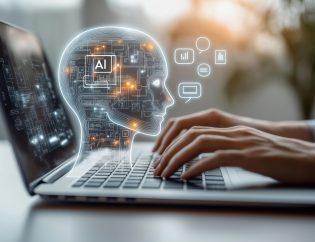Hiring the right talent at the right moment is a powerful advantage for businesses, but traditional forecasting methods, heavily reliant on historical data and intuition, often fall short. This can lead to reactive and costly hiring decisions. With AI-enabled data modeling, companies gain a proactive, data-driven tool that sharpens forecasting accuracy, paving the way for strategic workforce planning.
The Importance of Forecasting Hiring Needs
Understanding Workforce Planning
Workforce planning is the process of predicting and preparing for future hiring needs to ensure a company can maintain productivity and achieve its goals. Strategic workforce planning allows companies like firstPRO to match talent acquisition with business demands, helping to bridge talent gaps proactively rather than reactively.
Challenges of Traditional Hiring Forecasts
Relying on historical data and intuition, traditional methods may miss out on real-time insights, often underestimating demand during peak periods or leaving critical roles unfilled. Moreover, long hiring cycles and high turnover can further exacerbate issues, leading to increased costs and decreased productivity.
Benefits of Accurate Hiring Forecasting
Accurate forecasting offers several advantages:
Reduced hiring costs
Anticipating hiring needs with AI-driven forecasting helps businesses sidestep the expenses associated with the turnover and rehiring cycle. Every time a role is vacated and refilled, costs accumulate, including the expense of onboarding, training, and the time managers spend on the hiring process itself. By forecasting demand accurately, companies can focus on hiring quality talent that aligns with long-term needs, minimizing frequent rehiring and reducing associated costs.
Improved retention
With strategic, data-backed hiring, companies are better equipped to find candidates who fit both the role and company culture. This alignment is critical for retention, as employees who feel they’re in the right position and environment are less likely to leave. AI forecasts help identify these candidates, ultimately reducing turnover and building a more stable workforce.
Enhanced productivity
Proactively filling roles ensures that teams remain fully staffed, avoiding disruptions that could impact productivity. When hiring aligns with projected needs, departments can work without the strain of sudden vacancies or unexpected workloads. This steady productivity supports business growth and team morale, fostering a well-balanced, efficient workplace.
How AI-Enabled Data Modeling Works in Forecasting
Introduction to AI-Driven Forecasting Models
AI-driven forecasting models leverage machine learning and data analytics to predict hiring needs. By analyzing a wide array of data points, from economic indicators to industry-specific hiring trends, these models offer actionable insights for hiring strategies.
Sources of Data for AI Models
Effective AI models leverage a diverse range of data sources, allowing for precise and context-aware hiring forecasts.
Historical hiring data: Past hiring trends within an organization provide valuable insights into staffing patterns, helping to predict future needs based on seasonal demand or growth cycles.
Market trends: Real-time data on economic shifts, competitor hiring patterns, and changes within specific industries allow AI models to adjust hiring forecasts dynamically, responding to external forces that influence talent demand.
Internal workforce data: Information on employee turnover rates, skill gaps, and workforce demographics is crucial. This data helps AI identify potential vacancies and skill shortages, enabling proactive planning for roles that might otherwise remain unfilled.
Economic indicators: Broader economic trends, such as inflation rates, GDP growth, and unemployment rates, provide context for hiring needs, offering a macroeconomic view of workforce demand that aligns hiring efforts with overall market conditions.
You can learn more about how AI is transforming the hiring process in this article.
Key Algorithms and Techniques Used
AI-enabled models often utilize algorithms like regression analysis, neural networks, and natural language processing. These methods enable predictive modeling that learns from past data to forecast future needs with high precision.
Regression Analysis: By examining relationships between variables, regression analysis predicts hiring needs based on past trends and patterns, such as how seasonal fluctuations impact staffing levels. This technique allows for quantitative forecasting with a focus on measurable outcomes.
Neural Networks: Inspired by the human brain, neural networks learn from complex data sets, identifying non-linear patterns that may go unnoticed with traditional methods. This approach is especially valuable for detecting subtle trends and interdependencies in hiring data, making it highly effective for forecasting needs in dynamic or rapidly evolving markets.
Natural Language Processing (NLP): NLP enables AI to analyze text data, such as job descriptions, performance reviews, and even industry news. By processing language-based information, NLP can offer insights into skill demands, candidate qualifications, and emerging role requirements, helping organizations stay ahead of evolving workforce needs.
These techniques work in tandem to create predictive models that learn continuously, refining their accuracy in forecasting future hiring needs.
Steps to Implement AI-Enabled Hiring Forecasting in an Organization
- Define Hiring Goals and Objectives: Start by aligning hiring forecasts with business goals, such as scaling operations or entering new markets.
- Gather and Prepare Data: Data accuracy is essential; therefore, handle any missing or incomplete data meticulously.
- Select Appropriate AI Tools and Platforms: Evaluate options such as custom-built models or Software-as-a-Service (SaaS) solutions to find what best fits your company’s needs.
- Build, Test, and Refine the Model: Testing and refining the model are crucial to ensure the accuracy of predictions.
- Train HR Teams on AI Interpretation and Application: HR teams should be equipped to interpret AI insights, ensuring a seamless collaboration with data scientists.
Practical Applications and Real-World Examples
Predicting Seasonal Hiring Needs in Retail and Hospitality: A major retail chain uses AI forecasting to predict seasonal hiring needs. By understanding peak demand periods, they optimize temporary hiring, reducing costs and enhancing customer satisfaction.
Strategic Hiring for Growth in Technology Startups: For tech startups scaling rapidly, AI-driven forecasts offer a strategic advantage by pinpointing growth-phase hiring needs, helping avoid the pitfalls of reactive hiring.
AI in Succession Planning for Long-Term Workforce Stability: Some companies use AI to identify potential skills gaps and prepare for upcoming retirements, ensuring long-term stability and knowledge continuity within teams.
Reducing Time-to-Hire and Improving Talent Fit: Through AI, companies like firstPRO can streamline recruitment, shortening the time-to-hire and increasing the likelihood of long-term retention, a significant benefit in fast-moving markets.
Addressing Challenges and Limitations of AI in Hiring Forecasts
- Data Privacy and Ethical Considerations: Data privacy is crucial, especially when handling sensitive employee data. Ensuring data is anonymized and used responsibly is a must.
- Potential Bias in AI Models: AI models may inherit biases if the data is unbalanced, leading to skewed predictions. It’s essential to mitigate this by ensuring diverse, balanced data inputs.
- Cost and Resource Allocation: AI-enabled data modeling requires investments in technology and skilled personnel, which can be a barrier for smaller organizations. However, the long-term ROI from improved forecasting accuracy can offset these initial costs.
- Overreliance on AI Predictions: While AI provides powerful insights, human judgment remains essential to align predictions with company culture and values.
Future Trends in AI-Enabled Hiring Forecasting
- Integration with Other HR Technologies: AI-driven hiring forecasts will increasingly integrate with HR management systems, enhancing the recruitment and onboarding processes.
- Enhanced Data Collection Methods: Innovations such as real-time economic data and sentiment analysis will improve forecasting accuracy.
- Globalization and Remote Workforce Forecasting: As remote work becomes more prevalent, AI will help companies forecast needs across multiple regions.
Some Final Thoughts
AI-enabled forecasting represents a transformative approach to workforce planning, offering companies like firstPRO a way to proactively manage their hiring needs. By providing accurate, data-driven insights, AI helps businesses stay competitive in an increasingly dynamic market.









